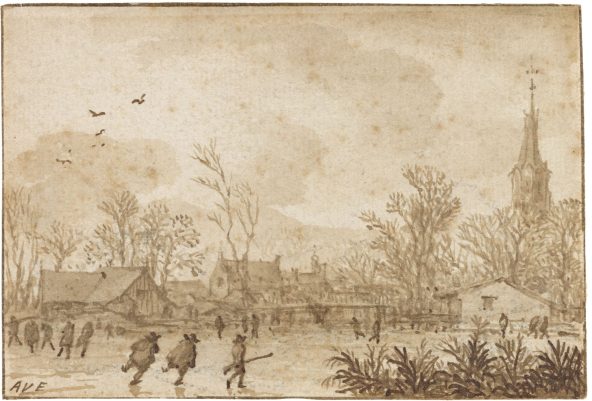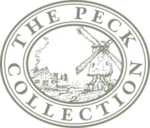Article: Winter in Dutch Drawings
Focus on the Peck Feature
This installation from the Peck Collection celebrates depictions of the winter season by seventeenth- and eighteenth-century Dutch artists. During this period, northern Europe experienced bitterly cold winters known as the Little Ice Age. Networks of canals, rivers, and lakes throughout the Netherlands froze for months on end, both challenging daily life and offering opportunities for fun and recreation. Extremely popular among artists and patrons, charming portrayals of winter activities like ice skating, sleigh rides, and ice fishing demonstrate how the Dutch embraced the frigid weather with perseverance and joy.
Although the winter months in the Netherlands are mild today, from the fourteenth to the nineteenth century northern Europe experienced bitterly cold weather known at the Little Ice Age. Frigid temperatures could extend for months on end, resulting in frozen canals, rivers, and lakes. Despite this disruption to daily life, the Dutch embraced solid waterways, using them as a quick means of transportation and as a site for fun and recreation. Artists were inspired by their snow and ice-covered surroundings, and created landscape and genre scenes that appealed to seventeenth-century collectors for their naturalism and charm.
This installation of drawings from the Peck Collection celebrates depictions of the winter season by three seventeenth- and eighteenth-century Dutch artists, from portrayals of ice skating and sleigh rides to hunting and ice fishing, among other activities. Although each drawing has a high degree of finish and features a similar use of wash, (or diluted ink) to indicate shadow and form, they differ in their mood and atmosphere. From a tranquil view of skaters outside of town to a bustling and crowded day on the ice, these drawings demonstrate how the Dutch endured the frigid weather with both perseverance and joy.
Winter Scene with Skaters and Hunters

Allart van Everdingen, Dutch, 1621 – 1675, Winter Scene with Skaters and Hunters, c. 1650, pen and brown ink with brown wash. The Peck Collection, 2017.1.31
See Winter Scene with Skaters and Hunters in more detail here.
The Dutch have enjoyed skating as a seasonal pastime for centuries. During the 1500s, they replaced traditional animal bone skates with thin strips of iron secured to their shoes, making it easier to move quickly over the ice. In this drawing, two skaters glide together in perfect synchronicity among pedestrians who, despite the icy conditions, go about their daily business.
Allart van Everdingen was a prolific draftsman and created numerous drawings representing the winter environment. Using wash, or diluted ink, the artist expertly captured the overcast and frosty atmosphere of a typical winter day in the Netherlands. Descriptive details, such as the hunched figures bracing themselves against the cold, add to the naturalism of the scene.
Ice Scene with Two Men Pushing a Sled

Gerard ter Borch the younger, Dutch, 1617 – 1681, Ice Scene with Two Men Pushing a Sled, c. 1633-34, pen and brown ink and wash. The Peck Collection, 2017.1.9
See Ice Scene with Two Men Pushing a Sled in more detail here.
Around the age of sixteen, Gerard ter Borch completed several drawings of wintertime activities. This drawing captures the swift nature of traveling on the ice as two young men push a woman in a sled. Shown from behind, the monumental figures run on the slick surface without the aid of skates past a cursorily drawn building in the background. Like the glassy surface of the frozen water, their bodies and movements mirror one another as they work toward the same goal. Despite Ter Borch’s young age at the time of this drawing, his use of flowing pen strokes and pronounced application of wash demonstrate the artist’s firm command of line and tone.
Winter Scene

Jacob Cats, Dutch, 1741 – 1799, Winter Scene, c. 1780-90, black chalk with brown wash. The Peck Collection, 2017.1.104
See Winter Scene in more detail here.
In this highly finished drawing, Jacob Cats presents an inventory of various winter pastimes. As our eye is drawn into the scene across the ice-bound plank and boat, the composition unfolds in a zigzag pattern over a vast body of frozen water, revealing individual moments: a seated man puts on his skates; a woman steps into a sled with the help of her companion; a man pulls goods on a wooden cart toward land; and men ice fish with their dog. Others in the distance skate, ride in sleighs, and enjoy a rest at a large refreshment tent. Created in the late eighteenth century, this drawing is an excellent example of the revived interest of seventeenth-century winter imagery.
